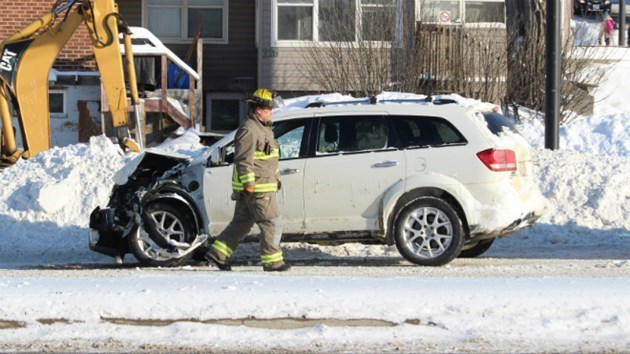The number of roadway crashes in Greater Sudbury has dropped significantly since 2014, a recent report to the operations committee said, with almost 950 fewer collisions in 2018 compared to four years ago.
There were 2,746 collisions on the city's roads in 2014, compared to 1,847 last year, the report said. And the number that resulted in injury or death has also seen a steep decline: 513 four years ago, compared to 262 last year.
The report is part of a policy approved last year that sees city staff collect information on what areas of the city see the most collisions, and which roads offer the best opportunities to reduce the number of accidents. Information is collected on the time of day of the incident, where it occurred and the cause, as well as year-by-year collision trends.
As anyone in the North knows, the most dangerous time of year to drive is winter. In Sudbury, January (a total of 1,367 over five years) and February (1,201) have seen the most crashes, followed by November (1,081) and December (1,046). September sees the fewest (662) followed by August (754) and July (755).
Friday (1,947), Wednesday (1,897) and Thursday (1,876) are the days of the week that see the most collisions, with Sunday (930) recording the fewest. And 9 a.m. (almost 700) and 5 p.m. (more than 900) are the times of day when most accidents take place.
A full 70 per cent of all collisions take place on the busiest (or arterial) roads and 54 per cent occur on roads where the speed limit is 50 km/h, with 27 per cent on roads where the limit is 60 km/h.
Based on the data, the intersections targeted for safety improvements this year and next include:
- Brady Street at Paris Street, where the biggest problem is collisions between cars turning north or south. The city is installing a left turn light for southbound vehicles to try and address the problem.
- Long Lake Road at Paris Street, where drivers are often confused about whether they are in a turning lane or one requiring them to keep going straight. Improved signage is planned this year.
- At a number of intersections on the list — Falconbridge Road at the Kingsway, Lasalle Boulevard at Notre Dame Avenue, and Falconbridge Road at Lasalle — the biggest problem is rear-end collisions caused by distracted driving. A road safety campaign is planned for this year.
- Finally, Paris Street at Van Horne sees several collisions because people are running the yellow-red light. The solution? Red light cameras, which will be installed next year in hopes that drivers who know they are on camera and will be ticketed will be less likely to disobey traffic lights.
For the full report, and to see all 20 roads on the safety assessment list, click here.
